- Home
- Quizzes
- My Quiz Activity
- Newsletters
- Sports Betting
- MY FAVORITES
- Add Sports/Teams
- SPORTS
-
NFL
- NFL Home
- Arizona Cardinals
- Atlanta Falcons
- Baltimore Ravens
- Buffalo Bills
- Carolina Panthers
- Chicago Bears
- Cincinnati Bengals
- Cleveland Browns
- Dallas Cowboys
- Denver Broncos
- Detroit Lions
- Green Bay Packers
- Houston Texans
- Indianapolis Colts
- Jacksonville Jaguars
- Kansas City Chiefs
- Las Vegas Raiders
- Los Angeles Chargers
- Los Angeles Rams
- Miami Dolphins
- Minnesota Vikings
- New England Patriots
- New Orleans Saints
- New York Jets
- New York Giants
- Philadelphia Eagles
- Pittsburgh Steelers
- San Francisco 49ers
- Seattle Seahawks
- Tampa Bay Buccaneers
- Tennessee Titans
- Washington Commanders
-
MLB
- MLB Home
- Arizona Diamondbacks
- Atlanta Braves
- Baltimore Orioles
- Boston Red Sox
- Chicago White Sox
- Chicago Cubs
- Cincinnati Reds
- Cleveland Guardians
- Colorado Rockies
- Detroit Tigers
- Houston Astros
- Kansas City Royals
- Los Angeles Angels
- Los Angeles Dodgers
- Miami Marlins
- Milwaukee Brewers
- Minnesota Twins
- New York Yankees
- New York Mets
- Oakland Athletics
- Philadelphia Phillies
- Pittsburgh Pirates
- San Diego Padres
- San Francisco Giants
- Seattle Mariners
- St. Louis Cardinals
- Tampa Bay Rays
- Texas Rangers
- Toronto Blue Jays
- Washington Nationals
-
NBA
- NBA Home
- Atlanta Hawks
- Boston Celtics
- Brooklyn Nets
- Charlotte Hornets
- Chicago Bulls
- Cleveland Cavaliers
- Dallas Mavericks
- Denver Nuggets
- Detroit Pistons
- Golden State Warriors
- Houston Rockets
- Indiana Pacers
- Los Angeles Clippers
- Los Angeles Lakers
- Memphis Grizzlies
- Miami Heat
- Milwaukee Bucks
- Minnesota Timberwolves
- New Orleans Pelicans
- New York Knicks
- Oklahoma City Thunder
- Orlando Magic
- Philadelphia 76ers
- Phoenix Suns
- Portland Trail Blazers
- Sacramento Kings
- San Antonio Spurs
- Toronto Raptors
- Utah Jazz
- Washington Wizards
-
NHL
- NHL Home
- Anaheim Ducks
- Arizona Coyotes
- Boston Bruins
- Buffalo Sabres
- Calgary Flames
- Carolina Hurricanes
- Chicago Blackhawks
- Colorado Avalanche
- Columbus Blue Jackets
- Dallas Stars
- Detroit Red Wings
- Edmonton Oilers
- Florida Panthers
- Los Angeles Kings
- Minnesota Wild
- Montreal Canadiens
- Nashville Predators
- New Jersey Devils
- New York Islanders
- New York Rangers
- Ottawa Senators
- Philadelphia Flyers
- Pittsburgh Penguins
- San Jose Sharks
- Seattle Kraken
- St. Louis Blues
- Tampa Bay Lightning
- Toronto Maple Leafs
- Vancouver Canucks
- Vegas Golden Knights
- Washington Capitals
- Winnipeg Jets
- NCAAF
- NCAAM
- Boxing
- Entertainment
- Lifestyle
- Golf
- MMA
- Soccer
- Tennis
- Wrestling
- More Sports
- RESOURCES
- My Account
- YB on Facebook
- YB on Twitter
- YB on Flipboard
- Contact Us
- Privacy Policy
- Terms of Service
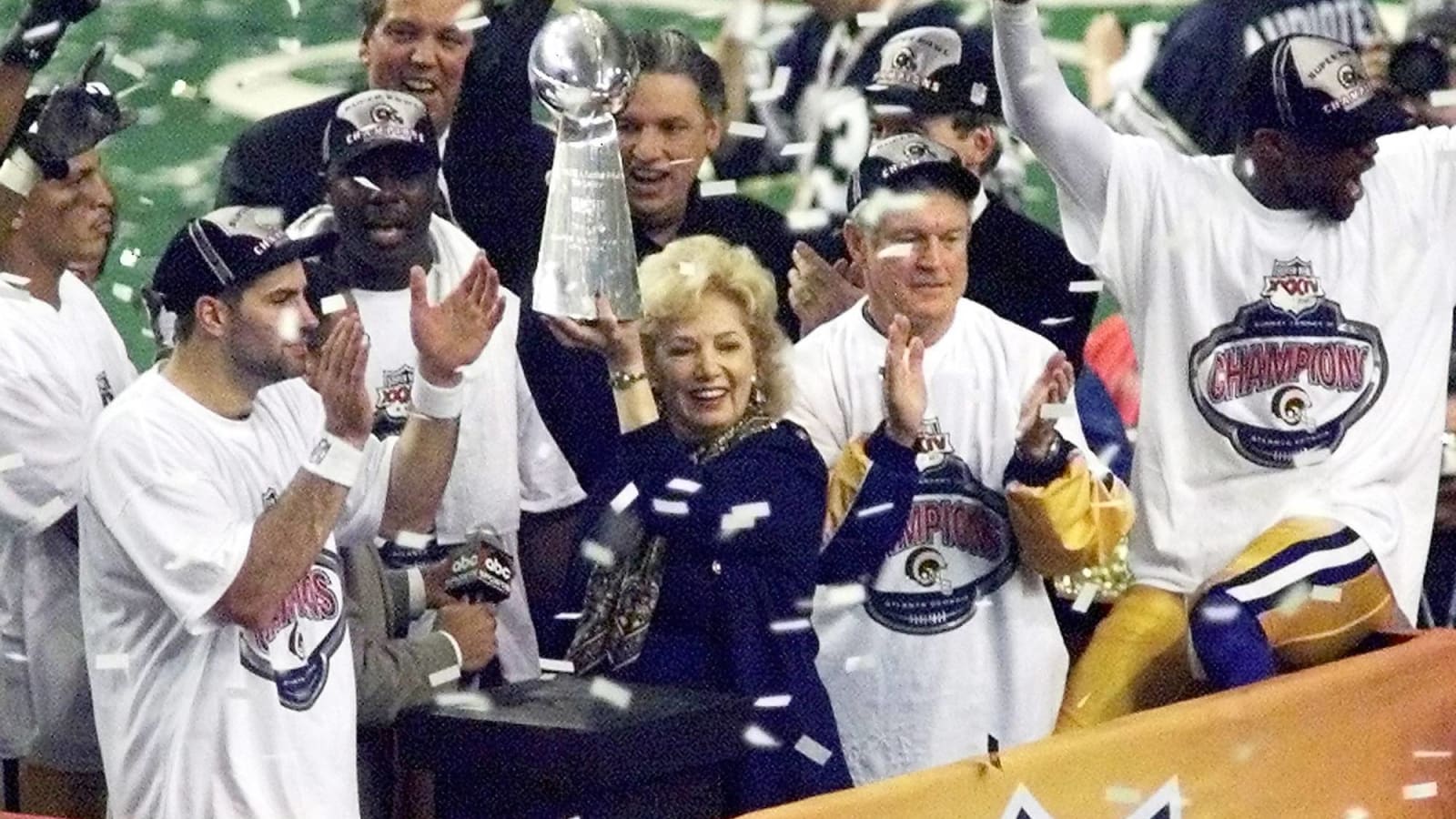
Sports dynasties that weren't actually dynasties
If you've been listening to sports talk radio and television debate shows, you probably have heard some analysts claiming the Kansas City Chiefs dynasty as dead. The Chiefs haven't been as dominating as they have over the last three seasons and finger-pointing has begun. What was once a foregone conclusion has -- wait a minute!
The Chiefs' dynasty? Dynasty?
Winning one Super Bowl and losing another doesn't really constitute a dynasty, does it? If you look back throughout sports history, there are plenty of great examples of sports dynasties. Bill Russell's Celtics. John Wooden's UCLA Bruins. The Steel Curtain. Nick Saban's Alabama. The Yankees have had several of them. So have the Lakers and Canadiens. One title doesn't really feel dynastic.
That's how the Chiefs have made people feel, though. That this was this unbeatable force that is suddenly struggling. They're not the only franchise that has seemed to be this dynasty when they really weren't. Franchises that have a season or a run of seasons that make it seem like they were the 1990s Bulls or even the 1970s Oakland A's. However, have less of a claim of being a dynasty as, say, the 1992-1993 Toronto Blue Jays.
So let's look back over the years to see what dynasties happened that didn't actually become one.
Sports dynasties that weren't actual dynasties
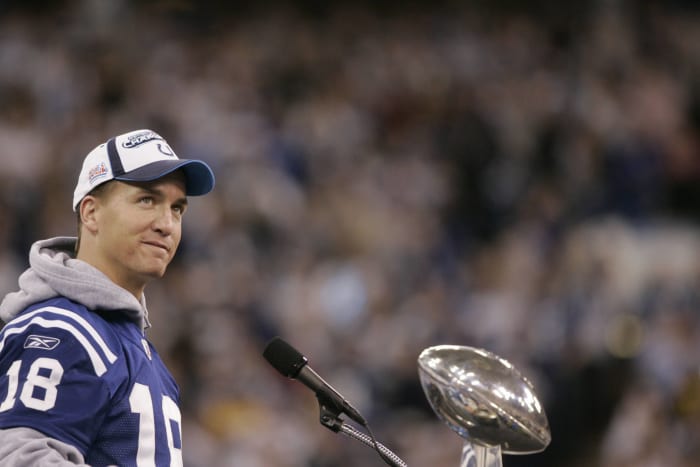
There are varying opinions about what makes a sports dynasty. Is it about repeats or three-peats? Is about winning titles over a long period of time? Is it even about winning multiple titles?
The Patrick Mahomes-era Kansas City Chiefs' dynasty was in question until they won Super Bowl LVII against the Philadelphia Eagles in 2023. Until then, their one title against a backdrop of five AFC championship appearances and a Super Bowl loss to Tampa Bay had them fall short. Their second title, however, changes the narrative of your dynasty status.
If you look back throughout sports history, there are plenty of great examples of sports dynasties. Bill Russell's Celtics. John Wooden's UCLA Bruins. The Steel Curtain. Nick Saban's Alabama. The Yankees have had several of them. So have the Lakers and Canadiens. One title doesn't really feel dynastic, even if you've come close in other seasons.
Franchises that have a season or a run of seasons that make it seem like they were the 1990s Bulls or even the 1970s Oakland A's. However, some have less of a claim of being a dynasty as, say, the 1992-1993 Toronto Blue Jays.
So let's look back over the years to see what dynasties happened that didn't actually become one.
Brooklyn Dodgers

The Brooklyn Dodgers are one of baseball's most romanticized franchises. The neighborhood feel of the franchise to the borough, Jackie Robinson breaking baseball's color barrier, the iconic hats and jerseys. The Dodgers would build a formidable roster with Robinson, Duke Snider, Pee Wee Reese, Gil Hodges, Roy Campanella and Don Newcombe and become a force during the 1940s and 1950s. Brooklyn would win six pennants in a ten year period, but would find themselves hitting a roadblock from fellow city teams the Yankees and Giants.
The Dodgers would lose to the Yankees in the 1947, 1949, 1952 and 1953 World Series ... two of which went to seven games. The Dodgers led the 1952 Series 3-2, but lost the final two games at their home ballpark, Ebbets Field. In 1951, the Dodgers blew a 13.5 lead over the New York Giants in the pennant race to force a three game playoff. In the third game, the Giants' Bobby Thompson hit the "Shot Heard 'Round the World" to eliminate Brooklyn.
In 1955, the Dodgers finally broke through. Brooklyn dominated the National League that season and faced the rival Yankees yet again for the championship. It seemed to be yet another failed season as they lost the first two games of the series before winning games 3, 4 and 5. On the brink of a championship, the Yankees scored five runs in the first inning of Game 6, reminding Dodgers fans of past failures. Brooklyn bent but didn't break in Game 7, winning 2-0 and their first World Series in franchise history.
It looked like momentum changed in the Dodgers-Yankees rivalry in 1956 when ... meeting yet again in the Fall Classic ... Brooklyn took a 2-0 lead in the series behind a potent offense. The Yankees, however, won the next three games in the series, including Don Larsen's perfect game in Game 5. After winning a thrilling Game 6, the Dodgers were spanked 9-0 in Game 7 to lose yet again to the Yanks. Jackie Robinson would strike out on the final at-bat of that game ... his last in baseball.
In 1957, the Dodgers were upset with Ebbets Field and were attempting to force the city to build a new stadium. Unmoved by the city's proposals, the team would end up moving to Los Angeles after the season, with the rival Giants (who were having the same difficulties trying to build their own new stadium) relocating to San Francisco.
The Los Angeles Dodgers would go on to win several World Series championships, including the 1959 Series. But the feeling that the Brooklyn Dodgers were stacking championships while tucked away on Long Island isn't true. They were some great, historic teams to be sure, but not the dynasty people may think they were.
t bi
St. Louis Hawks
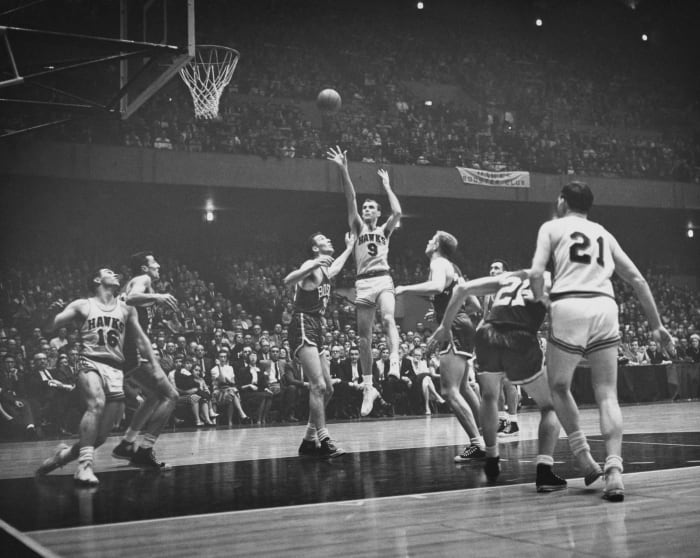
The Hawks franchise has moved around quite a bit during its history, but their time in St. Louis may be their most successful period. During their 13-year stay in Missouri, the Hawks won six Western Division regular season titles and went to the playoffs 12 times. The first six years of that time were their best.
Bob Pettit may be the NBA's most underrated super star. He won Rookie of the Year in 1955, MVP in 1956 (and 1959) and would lead the Hawks to the NBA Finals in 1957. Pettit was an All-Star in each of his 11 seasons, led the league in scoring twice and won four All-Star Game MVPs (only Kobe Bryant matched that total). His legend would likely be larger had the Hawks not have to deal with another burgeoning power -- the Boston Celtics.
Oddly enough, it was a trade between the two franchises that swung the balance of power. The Celtics traded Cliff Hagan and Ed Macauley to the Hawks for the draft rights to Bill Russell. The two teams would end up meeting in the NBA Finals, with the Celtics winning the series in seven games for their first championship. Russell scored 19 points and grabbed 32 rebounds in Game 7, the only Game 7 in league history that went to double-overtime. Pettit scored 39 in that game.
The two would meet up again in the Finals the following season. The two teams traded wins for the first five games, with the Hawks up 3-2 heading into Game 6 in St. Louis. Pettit had one of the greatest games in NBA Finals history as he hung 50 points on the Celtics ... still a record for points in a Finals closeout game (since tied by Giannis Antetokounmpo in 2021).
The Hawks and Celtics would meet up again in the 1960 and 1961 Finals with Boston winning both times. The Western Division was tougher to win as the Jerry West/Elgin Baylor Lakers (more on them in a bit) and Wilt Chamberlain's Warriors were emerging as powers. Pettit would retire in 1965, the franchise moved to Atlanta in 1968, and the St. Louis Hawks became one of the best teams that won just one championship.
New York Football Giants: 1956-1963
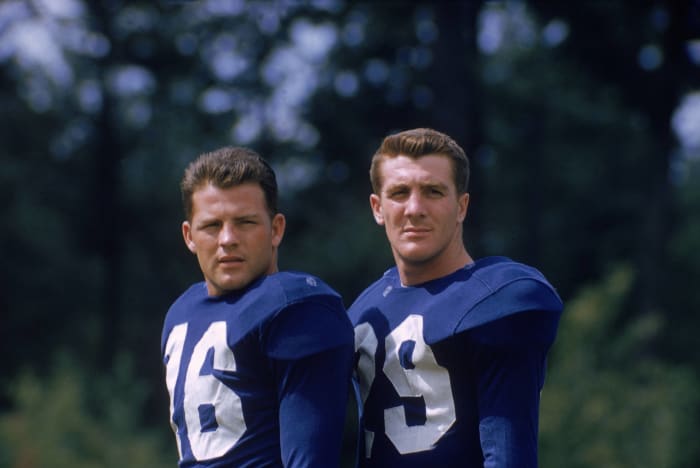
In the back of your mind, you may think the New York Giants were winning NFL championships back in the 1950s and 1960s. A lot of the memorable championship moments from that era involve the Giants, but usually it isn't because of them winning.
They did win in 1956. After missing the postseason for five years, the Giants won the Eastern Conference, boasted the league's MVP in halfback Frank Gifford, and met the Chicago Bears in the championship game. New York dominated Chicago, winning 47-7 for their first championship since 1938.
The Giants would win the Eastern Conference title in five of the next seven seasons -- each time ending with a loss in the NFL championship game. The 1958 title game is the most memorable, as the Colts ran in a touchdown in the NFL's first ever overtime game to beat the Giants. The two would meet up for the title the following year, with the Colts again winning.
After a 6-4-2 season where New York missed the playoffs, the Giants would win three straight Eastern Conference crowns ... but lose three straight NFL championship games. In 1961 and 1962, the Giants lose to an emerging force in the Green Bay Packers and their new head coach, former Giants assistant Vince Lombardi. In 1963, they'd lose to the Bears in the title tilt, 14-10.
Interestingly, the Giants had fought for survival by other football teams being placed in their markets. This period of time was relatively calm, which some attributed to having the city to themselves. Of course, the AFL's Titans (now Jets) were becoming extremely popular in the city and moved to the new Shea Stadium in Queens. Injuries during 1964 (especially to reigning MVP Y.A. Tittle) leveled the team to a 2-10-2 record and the franchise struggled to recover. As what happens to most dynasties -- real or imagined -- is that age and injury leads to a rebuild. The New York Giants would miss the playoffs for 17 consecutive seasons.
Wilt's Philadelphia 76ers

Wilt Chamberlain and the NBA rejoined Philadelphia in the mid-1960s. The Philadelphia Warriors had relocated to San Francisco in 1962 ... Chamberlain's third season in the league. A year later, the Syracuse Nationals moved to Philadelphia and became the 76ers. The following season, Wilt was dealt to the Sixers for four players and cash.
Chamberlain played just three and a half seasons with the Sixers, but they were elite-level seasons. He won the MVP during each of his three full seasons as a Sixer and quickly had Philadelphia as a contender. Wilt would run into an old foe, the Bill Russell and the Boston Celtics, in the Eastern Division Final. For the fourth time in his career, Chamberlain was ousted from the playoffs by the Celtics.
All that changed in 1966-1967. Chamberlain and the Sixers (including Hal Greer, Chet Walker and Billy Cunningham) cruised to what was then the best record in NBA history, 68-13. This time, Chamberlain blew past the Celtics in the playoffs, ending Boston's eight year NBA championship run ... then beat his old team, the San Francisco Warriors, in six games to lock in his first NBA championship.
That team is ranked among the best teams in league history and it looked as if they could form their own dynasty after seemingly ending Boston's. The Sixers moved into their new arena, The Spectrum, and Chamberlain (who was beginning to focus more on his defense due to having ample scoring options around him) won his third straight MVP award. Philly dominated the regular season again, winning the East Division by eight games over the Celtics. The two teams met yet again in the playoffs with the Sixers going out to a 3-1 lead in the division finals. With Cunningham sidelined, the Sixers blew the series lead and would lost to the Celtics in seven games.
After the season, a year-long feud between Chamberlain and ownership came to a boiling point and Chamberlain was dealt to the Los Angeles Lakers. The Sixers were still a decent team but failed to win a playoff series over the next three years and were out of postseason play the four years after that. Just a year removed from the best record in NBA history, and the Philadelphia 76ers were torn apart without fully reaching their potential.
Wilt, despite his illustrious career filled with ridiculous records, won just two titles in his career.
1970s Los Angeles Lakers

From 1959 to 1973, the Lakers (first in Minneapolis and from 1960-on in Los Angeles) went to the NBA Finals ten times. Nine of those times, they lost. The 1971-1972 Lakers were the only time during that run that the team broke through for a ring.
Jerry West was there for most of it. So was Elgin Baylor. In 1959 and during the 1960s, the Lakers lost to the dynastic Boston Celtics seven times in the NBA Finals. Three of those series went the full seven games, but none of them ended with the Lakers winning the title. As Bill Russell retired and the Celtics' run was seemingly over, the Lakers were still contending for championships. With a core of West, Baylor, Wilt Chamberlain and Happy Hairston, the Lakers would find themselves back in the Finals and facing a new rival -- the New York Knicks. In 1970, the two powers went to a 7th game ... which is now known as the "Willis Reed game" for Reed returning from injury to hit the first two buckets of the game and doing a phenomenal job defending Chamberlain. The Knicks handily won that game and their first NBA title.
Two years later, the Lakers had one of the best teams in NBA history. Los Angeles went on a 33-game winning streak (still a record) and ended the season with a 69-13 mark, the best record in NBA history until the 1995-1996 Chicago Bulls broke it. This was all despite the retirement of Baylor nine games into the year. Baylor blew out his Achilles the previous season and struggled with leg injuries at the beginning of the '71-'72 season. In the playoffs, the Lakers continued to dominate, blowing by the defending champion Milwaukee Bucks and beating the Knicks in five games for the Lakers first title since moving to LA.
In 1973, a Lakers-Bucks showdown in the playoffs seemed inevitable as the two dominated the Western Conference during the season. The Bucks were upset by the Warriors (which the Lakers then disposed of in the conference finals) to set up the third Lakers-Knicks Finals in four years. The Knicks had added Jerry Lucas and Earl Monroe that season which proved too much for the aging core of the Lakers. New York won in five games with Chamberlain retiring after the season.
Jerry West would retire the following year, making it the third consecutive season the Lakers watched a Hall of Fame player hang up his sneakers. In 1975 the Lakers missed the playoffs for the first time in 17 years, ending an amazing run that only resulted in one championship.
Of course, the Lakers would soon do alright and build a different dynasty of their own in the 1980s.
John Madden's Oakland Raiders

If you are in your 30s or younger, John Madden represents one of the most successful video game empires. If you are in your 40s or 50s, John Madden was one of the top NFL broadcasters and ad pitchmen in your life. If you're older than that, you remember Madden as the head coach of the Oakland Raiders from 1969 to 1978 in one of the most successful coaching stints in league history.
Madden went 103-72-7 during his coaching career, winning over 76% of his games. He took his Raiders to the playoffs eight times, winning seven division titles, but getting to just one Super Bowl. His Raiders lost five AFL/AFC championship games and lost the "Immaculate Reception" game to the Steelers in the divisional round in 1972. The Raiders had the reputation of being a band of misfits who crossed the line from time to time and the fact that they couldn't get to the big game was because of their outlaw ways.
In Super Bowl XI, the Raiders met up with another franchise that was known for not winning the big one. This was Minnesota's fourth Super Bowl appearance after losing their first three trips. The Raiders, with future Hall of Famers Fred Biletnikoff, Ken Stabler, Willie Brown, Art Shell, Dave Casper, Gene Upshaw, Ted Hendricks and Ray Guy jumped all over the Vikings in the second quarter and coasted to a 32-14 win and their first Super Bowl championship.
The Raiders would return to the AFC championship game the following season before losing to the rival Denver Broncos by three. After a 9-7 season in 1978 that ended without a postseason berth, Madden retired citing health reasons and burnout.
During that decade at the helm, Madden was the youngest coach to reach 100 wins, never had a losing season and has the second best winning percentage as a head coach in NFL history. With all the stars, history and lore behind the 1970s Raiders, they reached just the one Super Bowl.
Madden was replaced by Tom Flores, who would go on to win Super Bowls XV and XVIII.
Bill Walton's Portland Trail Blazers
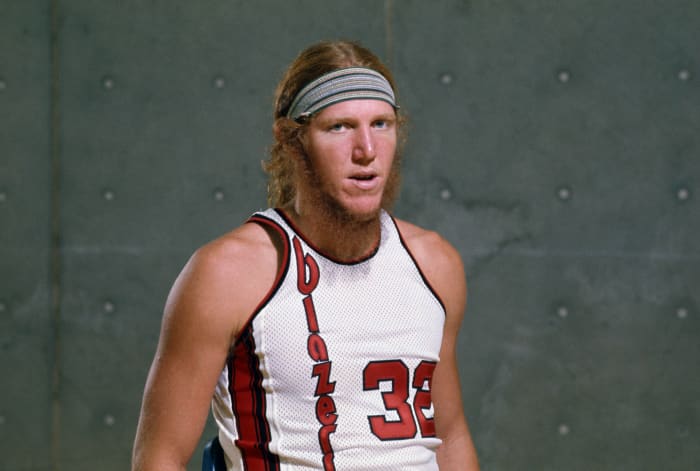
The 1977 Portland Trail Blazers are one of the best one-hit wonders in sports history ... and one of the great "what ifs" as well. Bill Walton was coming off a magical career at UCLA when he was drafted by the four year old Blazers in 1974. The marriage of Walton and Portland seemed perfect even as they got incrementally better over the next two seasons and he dealt with foot injuries.
And then came 1976-1977. Jack Ramsey took over as head coach and the Blazers added Maurice Lucas from the merger with the ABA. Walton still was nursing injuries, but still played 65 games and led Portland to 49 wins and the first winning season and playoff berth in franchise history. What was supposed to be a raucous, but short stay in the playoffs turned into a great Cinderella story. After squeaking by the Bulls and dispatching the Nuggets, the Blazers surprisingly swept fellow UCLA legend Kareem Abdul-Jabbar and the Lakers in four games to earn a berth in the NBA Finals.
Up next was the Philadelphia 76ers who were led by another ABA entry, Julius "Dr. J" Erving (more on them in a bit). The Sixers won the opening tip which Erving dunked and it looked as if Portland's sparkling season would end (it especially looked that was after Philly took a 2-0 series lead). The Blazers went home in front of their roaring crowd and would win the next two games, gaining confidence that they can win the title. After handling the Sixers in Philly for Game 5, the Blazers clinched their first championship with a 109-107 win in front of their fans.
People tend to look at that team as a one-hit wonder, but the 1977-1978 Blazers would start the season 50-10 before Walton broke his foot and missed the rest of the regular season. Portland would go 8-14 the rest of the season and lose to rival Seattle in the playoffs (Walton did come back in that series but re-injured his foot). Walton would demand to be traded after he felt his injuries were mismanaged and he'd never play for the Blazers again.
Walton sat out the next season in protest, but the Blazers still managed to reach the playoffs. He would sign with the San Diego Clippers in the offseason where he'd continue to fight injuries the rest of his career. Portland kept plugging away, reaching the playoffs before typically bowing out in the first round. From 1978 to 1989, the Blazers would lose in their first playoff series nine times before entering the Clyde Drexler-Terry Porter era of success.
Walton and the Blazers would make amends decades later, but there's always a huge "what if" that follows this era.
Carlton and Schmidt's Philadelphia Phillies

When you have one of the best hitters and pitchers of your era, you hope to cash in on a couple of championships. The Phillies of the 1970s and 1980s were set up with just that but had the unfortunate luck to play as the Big Red Machine and the late-'70s Dodgers were running things in the National League.
Mike Schmidt is one of the best third basemen of all time and brought star power to Philly during the 1970s and would win MVP awards in 1980, 1981 and 1986. Steve Carlton was acquired after a successful six-year run with the St. Louis Cardinals that included a World Series title. Both made their Phillies debut in 1972.
Carlton would win the first of four Cy Young Awards in 1972 despite being part of a dismal 59-97 season (Carlton would win 27 of the Phils' 59 victories that year). It was a slow build that broke out with a 101-win season in 1976 and a loss to one of the greatest teams in baseball history, the Cincinnati Reds, in the NLCS. It would be a player on that Reds team that would put the Phillies over the top, when Pete Rose signed with Philadelphia as a free agent in 1979. Late that season, the Phillies would tab Dallas Green to be their new manager.
Everything came together in 1980. The lineup was strong. The infield of Rose, Manny Trillo, Larry Bowa and Schmidt was elite defensively (they could hit, too) while the outfield of Garry Maddox, Greg Luzinski and Bake McBride combined speed and power. Catcher Bob Boone managed a rotation that included Carlton, Bob Walk and Dıck Ruthven (plus Tug McGraw as the closer). One of Schmidt's three MVPs and Carlton's four Cy Young seasons came in '80. The Phillies would finally reach the World Series and beat the Kansas City Royals in six close games for their first championship in franchise history.
Green would be hired away by the Cubs after the 1981 season and the roster went through some changes but the core (and success) remained. The Phillies went back to the Series in 1983 but were beaten by the Orioles in five games. Rose would be released after the season and the team was cycling through managers at an alarming rate for such a good team. Carlton would leave in 1986 and Schmidt retired in 1989 as the Phillies had begun a rebuild.
From 1976 to 1983, the Phillies went to the playoffs six times and the World Series twice. The 1980 World Series championship was the franchise's only title until the Jimmy Rollins-led bunch won it all in 2008.
Philadelphia 76ers: Dr. J era

Let's stay in Philly for another team that was loaded during the 1970s and 1980s but only cashed in on one title. The 76ers were really bad in the early '70s, including a 9-73 mark in 1973. During this time, the Sixers would acquire good pieces (Doug Collins, Darryl Dawkins, George McGinnis, Caldwell Jones, Lloyd "World B" Free and Joe Bryant ... aka Kobe's dad) that would help built a solid foundation.
The great fortune came in 1976 when the Sixers acquired Julius Erving from the Nets for cash. The team clicked and would beat the defending champion Celtics in the playoffs. Philadelphia would win the first two games of the NBA Finals against the Trail Blazers before losing the next four and the series.
Still, the team wasn't going away. The Sixers would win 55 games in 1977-1978 before being upset by the Washington Bullets in the Eastern Conference Finals. Along the way, the Sixers would add point guard Maurice Cheeks and forward Bobby Jones to replace McGinnis, Free and Bryant) and make a return to the Finals in 1980. There the Sixers would face a rebuilt Lakers team with MVP Kareem Abdul-Jabbar and rookie Magic Johnson in one of the most memorable Finals in history. Despite Dr. J's heroics (and that legendary baseline move), the Sixers lost in six games.
The Sixers essentially became the third wheel to the re-surging Lakers-Celtics rivalry. From 1980 to 1985, the Sixers faced the Celtics four times and the Lakers three times in the playoffs. In 1981, Philly had a 3-1 lead on Boston in the Eastern Conference Finals before losing the final three games by a combined five points. That was one of the most disappointing losses in franchise history, as the 40-42 Houston Rockets were the NBA Finals opponent which likely would've given the Sixers their much craved title.
The 1982 season looked very similar. After battling the Celtics during the season in the Atlantic Division race, the two met again in the Eastern Conference Finals and again the Sixers would hold a 3-1 lead before losing Games 5 and 6. Instead of history repeating itself, Philly went into Boston Garden and handled the Celtics for a berth in the 1982 Finals. Waiting for them was Kareem and Magic's Lakers, who won the series in six games again.
The 1982-1983 season was where everything hit. The Sixers acquired reigning MVP Moses Malone from the Rockets and Philly went on a tear, winning 65 games and putting the Celtics in the rear view mirror. Malone would repeat as the league's MVP, Jones won Sixth Man of the Year, and Erving joined Malone on the First Team All-NBA squad. Malone would promise that the Sixers would go "fo', fo', fo'" during the playoffs by sweeping the Knicks, beating the Bucks in five and rolling the hated Lakers in a sweep (he was just one game off). The Sixers won their first championship since Wilt Chamberlain did it in 1967.
The 1983-1984 Sixers roared to a 21-5 start up would struggle the rest of the season and lose to the Nets in the first round of the playoffs. After drafting forward Charles Barkley in the offseason, Philly went 58-24 but the aging team would lose to the Celtics in the conference finals. After losing to the Bucks in the 1986 playoffs, the team began to dismantle to build around Barkley. Jones retired, Malone was traded away and the next season was a season-long retirement party for Erving. The team also made bad trades that hamstrung the franchise for the next few years.
When people talk about the great NBA teams of the 1980s, they bring up the Lakers, Celtics and Pistons ... but they tend to forget to the 76ers who had the star power, Hall of Famers and swagger of all of those teams. A potential dynasty that just didn't happen because they ran into ones that did. Looking back, that Sixers run came so close to being on that level.
St. Louis Cardinals: Whitey Ball
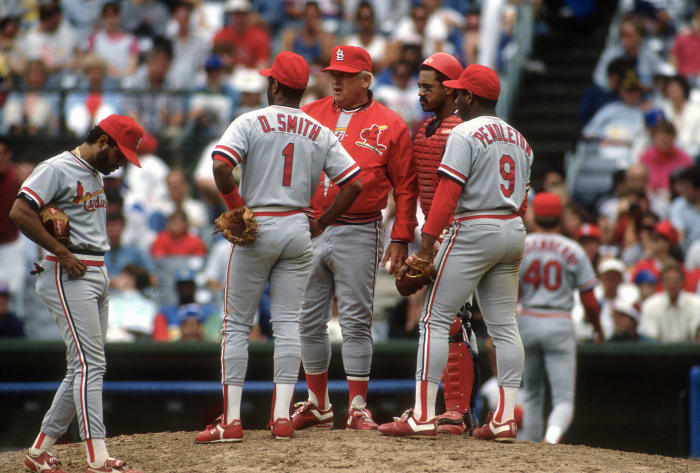
The 1980s St. Louis Cardinals were known for their speed and defense and were built in a way that would be alien to the way baseball fans today are used to. When Whitey Herzog was hired to be the Cards' manager on a permanent basis in 1980. He gutted the roster and created a roster to fit his Whitey Ball style. Ozzie Smith, Willie McGee, Vince Coleman, Lonnie Smith, Keith Hernandez and Tommy Herr embodied this image. They would win three pennants in the 1980s while hitting the least home runs in the league -- a feat that has never happened since. Their small ball worked as great pitching, base stealing and defense was the best in the league and St. Louis used the fast and spacious turf field at Busch Stadium to their advantage.
It all came together in 1982 when the Cardinals won their first National League pennant in 16 years and beat the Milwaukee Brewers in a great seven game series. After a couple of playoff-less seasons, the Cardinals would go to the 1985 and 1987 World Series, losing to the Kansas City Royals and Minnesota Twins in seven games, respectively. The 1985 team won 101 games, boasted Willie McGee as NL MVP, Vince Coleman as Rookie of the Year and Herzong was Manager of the Year. During this time, St. Louis would add power hitter Jack Clark, Andy Van Slyke and Terry Pendleton to form one of the best lineups in baseball.The roster was full of Gold Glovers and usually had several of the stolen base leaders.
The Cards wouldn't get back to the playoffs until 1996, by that time the core of those great 80s teams were long gone. Whitey Ball produced just one World Series championship and a couple of close misses.
'85 Chicago Bears
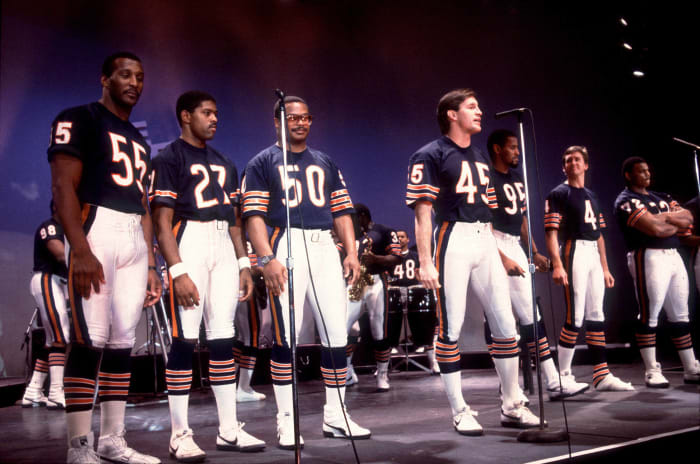
There aren't many individual teams as revered as the 1985 Chicago Bears. Those Bears went 15-1 during the regular season and blew through the playoffs, outscoring their three opponents by a combined total of 91-10. Ditka. The Fridge. Walter Payton. Jim McMahon. Willie Gault. Hampton-Dent-McMichael. Singletary. Buddy Ryan. They released the "Super Bowl Shuffle", which they recorded the day after their Monday Night loss to Miami, after pounding New England in Super Bowl XX. Six Hall of Famers. Defensive players Mike Singletary, Ron Rivera, Leslie Frazier and Jeff Fisher all would go on to be NFL head coaches.
A legendary team that always gets mentioned among the greatest of all time ... but curiously the Bears success was limited to 1985. Many feel it was because defensive coordinator Buddy Ryan left to become the Philadelphia Eagles' head coach. Not only was Ryan the architect of the Bears' 46 Defense, but players liked and respected him more than Ditka.
Chicago would go 14-2 in 1986 but were bounced out of the playoffs by Washington in the divisional round of the playoffs. Jim McMahon showed up to camp overweight and spent much of the season injured (remember Green Bay's Charles Martin's cheap shot?). The defense was still historically great, but the offense suffered under poor quarterback play by McMahon, Mike Tomczak and Doug Flutie.
Things went off the rails in 1987. McMahon was angry that the Bears drafted Jim Harbaugh in the first round, and the players turned on Mike Ditka when he publicly supported management during the player's strike. Chicago would go 11-4 and once again get bounced by Washington in the playoffs, which would be Walter Payton's final game.
By 1989, the Bears were out of the playoffs. They'd have some success in the early 1990s but things would fall apart again and Ditka was let go in 1992. Those Bears only went to the one Super Bowl despite having all those Hall of Famers and one of the best defenses ever created.
New York Mets: Dwight and Darryl
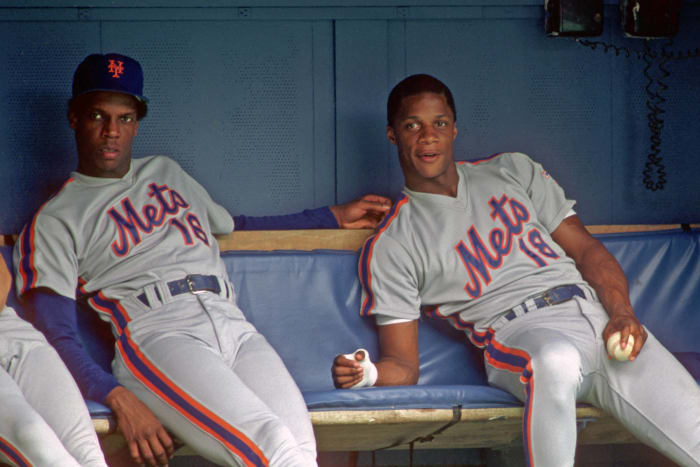
Like the 1985 Chicago Bears, the 1986 New York Mets own a level of mythology where their title season transcends some dynasties that have come since. Just look at the roster: Darryl Strawberry, Dwight Gooden, Gary Carter, Ray Knight, Keith Hernandez, Ron Darling, Jesse Orosco, Kevin Mitchell, George Foster, Lenny Dykstra, Bob Ojeda, Sid Fernandez and Roger McDowell, among others. Great characters that were known to enjoy everything that New York had to offer in the 1980s.
The Mets began to emerge in 1984 with their first 90-win season since their world championship season of 1969. They finished in second place in '84 and 1985 but were on the doorstep of breaking through. The 1986 Mets were dominant -- going 108-54 and finishing 21.5 games ahead of the Phillies in the NL East. After disposing of the Houston Astros in six games, the Mets would face off against the Boston Red Sox in one of the greatest World Series of all time. New York's 9th inning rally with two outs in Game 6 is one of the most memorable turn of events in sports history.
After winning the 1986 World Series, the Mets would finish second to the Cardinals before winning the NL East again in 1988. New York would lose the NLCS to the Dodgers in 7 games, but fractures were already showing in the ballclub. Guys like Carter, Hernandez, Dykstra, McDowell and Mookie Wilson all departed, but the Mets still hung around the top of the standings for a few seasons until the bottom fell out in 1991. Strawberry signed with the Dodgers and manager Davey Johnson was replaced by Bud Harrelson. The franchise spent much of the '90s near the bottom of the NL East.
All that talent. The pitching, hitting, youth, veterans, and the pulse of the city ... yet only went to one World Series.
Oakland Athletics: Bash Brothers

After the A's three-peat in the early 1970s, there were some really lean years in Oakland. That would change around 1986 when the Athletics would start developing guys that would become the core of a punishing lineup and wicked pitching staff for years to come. Oakland would have the American League Rookie of the Year three straight seasons -- Jose Canseco (1986), Mark McGwire (1987) and Walt Weiss (1988). The A's would have three different guys win MVP awards (Canseco, Rickey Henderson, Dennis Eckersley) and two Cy Young Award winners (Eckersley, Bob Welch) over a five year span.
The Bash Brothers of Canseco and McGwire filled highlight shows and adorned posters on bedroom walls in the late 1980s and early 1990s. They hit moon shots that captivated the league while the roster was filled with so many personalities that were led by Tony LaRussa.
Two things downplay what might have been an A's dynasty. First off, they won just one World Series with all that talent -- and that series was best remembered for an earthquake before Game 3 that postponed the series by 10 days. They were heavily favored to win the 1988 and 1990 World Series but were pummeled by the Dodgers and Reds, respectively.
Secondly, history hasn't been too kind to this team in regards to steroids. Canseco and McGwire have become two of the most notorious PED users and many look back at the 1986-1992 Athletics as a juiced bunch.
The A's fell off the cliff in 1993. Stewart, Harold Baines and Mike Moore left in free agency, Weiss was traded, Carney Lansford retired and Rickey Henderson would be dealt to the Blue Jays in July. A rebuilt pitching staff filled with big names underwhelmed and the A's would finish in last place in the AL West. The franchise would finish at or near last place for several years before Billy Beane's analytics took hold in the late 1990s.
Atlanta Braves: Bobby Cox's run
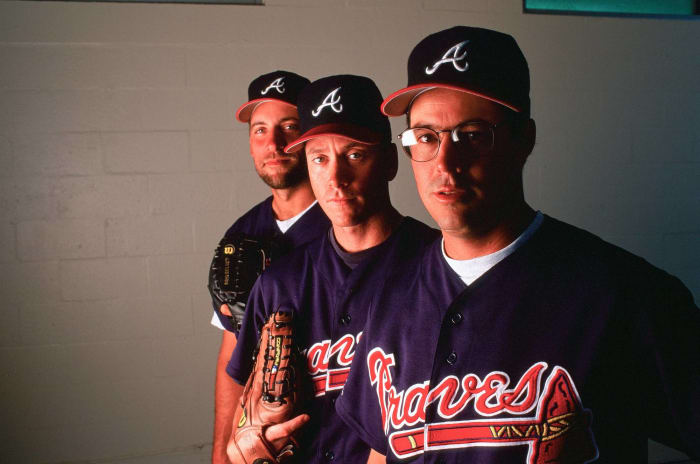
The Atlanta Braves lost at least 97 in three straight seasons before stunning everyone by winning the National League pennant in 1991. The young Braves were built around pitchers Tom Glavine, John Smoltz and Steve Avery as well as young hitters David Justice and Ron Gant and veterans Terry Pendleton, Lonnie Smith and Sid Bream. Atlanta was wild with the Tomahawk Chop and owner Ted Turner and Jane Fonda sitting front and center during the series.
The 1991 World Series was one of the best of all time, ending with a walk-off Minnesota Twins win in Game 7. The Braves returned to the Series in 1992, only to lose to the Toronto Blue Jays. After losing to the Phillies in the NLCS in 1993 (and the 1994 playoffs canceled), the Braves would get back to the World Series in 1995 and would beat the Cleveland Indians in six games. That would be the Braves first World Series title since 1957 when the franchise was in Milwaukee and Atlanta's first championship.
The pitching staff, who acquired Greg Maddux in 1993, was one of the greatest in baseball history. From 1991 to 1998, a Braves pitcher won the Cy Young Award six times (Greg Maddux also won the 1992 award as a member of the Chicago Cubs). Atlanta would get back to the World Series in 1996 and held a 2-0 lead over the Yankees before losing the next four games and the series. The two teams would meet again in 1999 -- a Yankees sweep.
Not counting the strike-canceled 1994 season, the Braves would win 14 consecutive division titles. They would win at least 100 games six times and played in five World Series. Three different pitchers won six Cy Young awards with Chipper Jones winning the 1999 NL MVP award. All that winning in an era of expansion and free agency and all under one manager in still unreal when you look back upon it. Yet this run of success saw only one World Series championship, which will be the caveat forever added to this team.
1994 New York Rangers
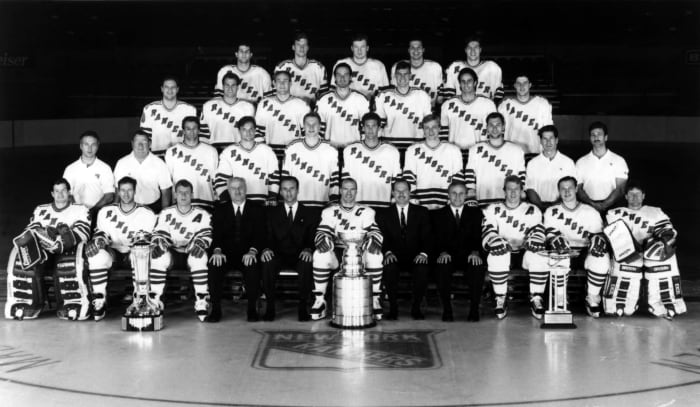
The NHL went through some housekeeping changes for the 1993-1994 season. Gone were the Wales and Campbell Conferences (along with the Adams, Patrick, Norris and Smythe divisions) as the league used the standard Eastern and Western Conferences. Also, the New York Rangers won their first (and currently last) Stanley Cup since 1940.
The Rangers hired Mike Keenan as head coach and the final piece to a championship puzzle. New York had acquired Mark Messier from the Oilers two years earlier, as well as Adam Graves, Craig MacTavish and Glenn Anderson. The Rangers won the President's Trophy for most points in the league and were never shut out during the regular season. After trailing the Devils three games to two in the Eastern Conference Finals, Messier guaranteed a win -- and delivered with a hat trick in Game 6. Stephane Matteau scored in double overtime in Game 7 to send the Rangers to the Cup Finals.
After gaining a 3-1 series lead over the Vancouver Canucks, the Rangers would lose Games 5 and 6 to send the series to a winner-take-all Game 7. New York would hold on to win, 3-2, to win their first Stanley Cup in 54 years.
While the city went wild over their champs, drama ensued with the franchise. Keenan clashed with ownership and resigned, claiming the Rangers broke their contract with him. The Rangers finished 4th in the Atlantic Division and were eliminated in the second round of the playoffs. After a rebound season in 1995-1996 (however, they again lost in the second round), New York would finish in the bottom half of the division for eight straight seasons.
From 1989-1990 to 1995-1996, the Rangers led the league in points twice and won three division titles but struggled to find postseason success. That is, except for 1994.
Green Bay Packers with Brett Favre
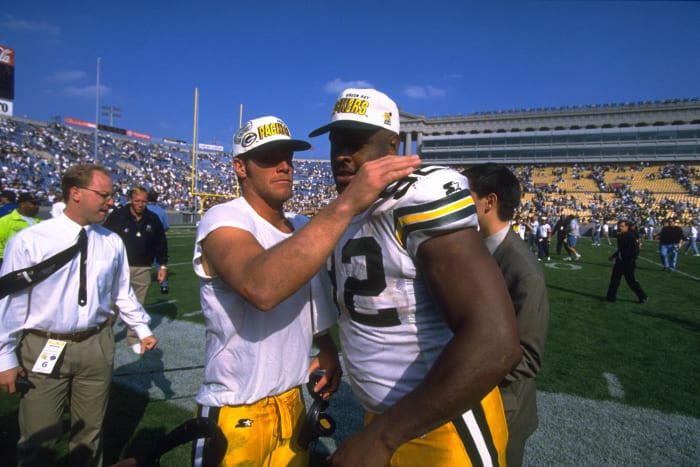
The Green Bay Packers have one of the greatest histories in sports, but this was not a successful franchise after the Vince Lombardi-led Packers dynasty ended in the 1960s. From 1970 to 1992, the Packers reached the playoffs just twice with their only postseason win coming in the expanded playoffs after the strike-shortened 1982 season.
Things changed quickly in the '90s. In 1992, the Packers acquired Brett Favre from the Falcons. A year later, Green Bay would acquire top free agent Reggie White and hired Mike Holmgren as their head coach. White's signing was a major deal and a sign that other free agents could sign with the small market Packers and find success. With Favre eventually taking over the starting job, Green Bay went on a run of success that fans felt would rival their dominance in the '60s. During Holmgren's six years as head coach, Green Bay reached the playoffs every season, winning nine playoff games and reaching two Super Bowls ... winning Super Bowl XXXI over the New England Patriots. Favre would win three straight MVP awards and Reggie White was Defensive Player of the Year in 1998.
As great as those Packers teams were, they never reached their dynasty potential. Early on, the Dallas Cowboys and San Francisco 49ers were the beasts for the NFC and the building Packers couldn't quite cut in the dance. In fact, the Cowboys eliminated Green Bay in the playoffs in 1993, 1994 and 1995. In 1996, Green Bay would beat the Niners before disposing the second-year Carolina Panthers (who upset the Cowboys in the previous round) and reaching their first Super Bowl since Super Bowl II. Favre and the Packers rolled the New England Patriots, marking the 13th straight season the NFC beat the AFC in the Super Bowl.
Green Bay returned to the Super Bowl the following year, but were upset by the Denver Broncos, ending the NFC's winning streak and turning John Elway and the Broncos from bridesmaid to bride. Denver would repeat as champions, while Favre never got back to the Super Bowl.
Holmgren left for the Seattle Seahawks after the 1998 season and White retired. Green Bay would miss the playoffs the next two years before reaching the 2001 playoffs. The Packers wouldn't reach the NFC championship again until the 2007 season, where they lost to the New York Giants in overtime. Favre would retire, the Packers moved on to Aaron Rodgers, and soon an ugly divorce unfolded in front of our eyes.
All that overshadows what were some great Green Bay teams that just didn't win big as much as you would think they could've.
St. Louis Rams: Greatest Show On Turf

The turn-of-the-century Rams are one of the great sports stories. The Rams had not only missed the playoffs nine straight seasons but they were a god awful mess. They lost 10 games eight times during that stretch and in 1995 moved from Anaheim to St. Louis in an ugly relocation saga. The team hired Dıck Vermeil ... who famously burnt out as the Eagles coach in the 1980s ... as their head coach in 1997. The Rams went 9-23 in his first two seasons.
At the time, there was no reason to think 1999 would be any better. The Rams did hire Mike Martz as their offensive coordinator, signed quarterback Trent Green and drafted Torry Holt and Dre Bly. Oh, they also acquired Marshall Faulk from the Colts for draft picks.
Green went down with an injury in the preseason, Kurt Warner (who was the team's third string QB in 1998) took over and had one of the most unlikely seasons and careers in sports history. Warner would throw for 4,353 yards and 41 touchdowns while earning league MVP honors. St. Louis would win 13 games, just two less than what the franchise won over the last three seasons combined. In Super Bowl XXXIV, the Rams first Super Bowl appearance in 20 years, Warner passed for a then-record 414 yards in a 23-16 thriller to win the championship. Vermeil retired after the season and Martz took over as head coach.
The Greatest Show On Turf was born. The Rams would have a small drop off in 2000, finishing second in the NFC West and bounced from the playoffs by the Saints. Faulk won MVP honors and the offense was one of the most efficient on record, becoming one of just three teams to score 35 points in a game nine teams in a season. At issue was a bad defense, who allowed 471 points on the season.
In 2001, Lovie Smith was hired to be the defensive coordinator and Aeneas Williams was signed to be a lock-down corner. The team went 14-2 with Warner winning his second MVP award (the team's third straight MVP) and earning their second trip to the Super Bowl in three years. St. Louis were 14-point favorites over the New England Patriots and their second-year quarterback Tom Brady. The Patriots stifling defense kept the Rams and Warner in check, building a 17-3 lead heading into the fourth quarter. Warner and the offense woke up, scoring two touchdowns to tie the game. The Patriots marched down the field over the final 90 seconds with an Adam Vinatieri field goal as time expired to win the game in a stunning upset.
The Rams never really recovered. Warner, who was banged up, and the offense weren't as explosive, and they lost their first five games of the 2002 season. After a five-game winning streak to even their record, St. Louis would lose four of their next five and miss the playoffs. Warner was benched in favor of Marc Bulger and the Greatest Show on Turf era was over.
That three year stretch ended just as suddenly as it appeared. A shining light that appeared out of nowhere and ending in a flash ... but one that wasn't fruitless. Their one Super Bowl victory is held up as both a sign that a champion can appear out of nowhere, but the burnout signified that championship windows can shut abruptly.
Indianapolis Colts with Peyton Manning
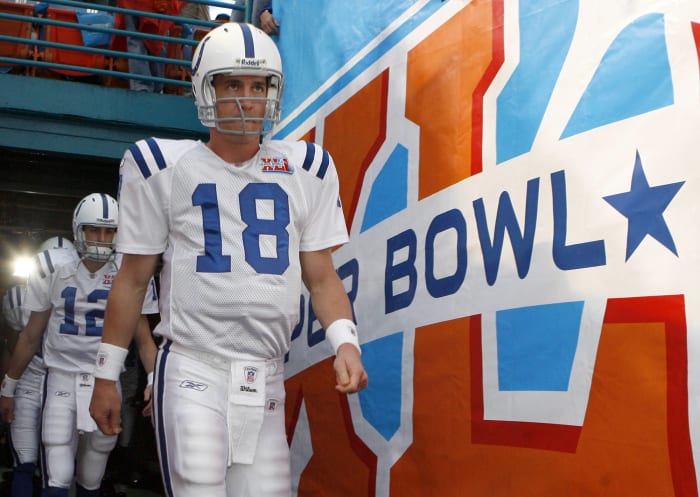
Peyton Manning is one of the greatest, smartest and most popular quarterbacks in NFL history. So why did he win just one Super Bowl during his 13-year career with the Indianapolis Colts?
This wasn't a Dan Marino situation where he was just an elite quarterback that didn't have the right team built around him. In all honesty, the team was built exactly as he wanted. With his array of audibles and blocking calls at the line, his own home crowd knew to stay silent to allow Manning to set his offense before every snap. He won four MVP awards, weapons like Marvin Harrison, Edgerrin James, Reggie Wayne and Dallas Clark. He had a smart and nimble offense line and the Colts defenses were typically solid.
Manning and those Colts had a reputation as being a regular season team that didn't perform as well in the postseason. The first three playoffs Manning played in, the Colts offense wasn't explosive ... averaging 11 points a game. From that point the offense was either boom or bust. From 2003 to 2005, the Colts averaged 42.6 points in playoff wins and 11.7 points in three losses. It doesn't help that they had to face Tom Brady and the dynasty Patriots twice in the postseason.
All that changed in 2006. The Colts went 12-4 and blew past the Chiefs in the Wildcard round, but found themselves in a defensive struggle against the Ravens, winning 15-6. NExt up were the Patriots who had won three of the last five Super Bowls. Manning went toe to toe with Brady, winning 38-34 and vaulting him to his first Super Bowl. There, the Colts beat the Bears on a rainy night in Miami, 29-17, possibly beginning a run of Colts championships that we've expected since Manning came into the league.
That didn't happen. The Colts always were contenders but reached just one more Super Bowl, where they were outcoached and outplayed by the Saints on that same field in Miami. Two years later, Manning missed the 2011 season with a neck injury, the Colts drafted Andrew Luck and would trade Manning to the Broncos.
Manning went 141-67 with the Colts and started 208 consecutive games. He threw for almos 55,000 yards and 399 TDs. In four seasons with the Broncos, Manning would win the 2013 MVP, reach the Super Bowl twice, and winning Super Bowl 50 ... his final game.
John Calipari's Kentucky Wildcats
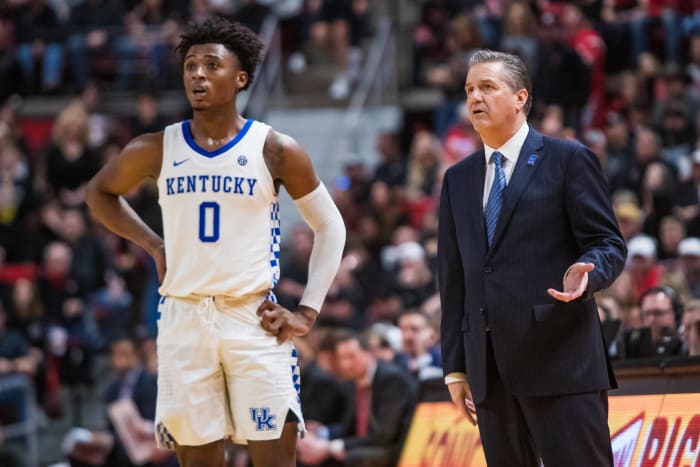
John Calipari's time at Kentucky has been revolutionary. He embraced the one-and-done culture thrust upon the NCAA by the NBA and created a program that was open about being a weigh station to the NBA. Because of that, Kentucky routinely has one of the top freshman classes and fills the NBA with draft picks. From 2010 to 2015, Kentucky produced three No. 1 overall draft picks (John Wall, Anthony Davis, Karl Anthony-Towns) and as of 2021 has 21 lottery picks.
Despite all of the talent Kentucky has seen walk through its campus and played in Rupp Arena, Calipari has only won one NCAA Tournament. It happened in his third season behind Davis and Michael Kidd-Gilchrist and had the feel that Calipari was ready to make a Wooden-esque run by stacking the best talent and overpowering opponents. That hasn't been the case, however.
Calipari has been successful in the tournament. His Wildcats have reached the Final Four four times, the championship game twice and the 2012 title. It's hard to put a finger on why Kentucky hasn't dominated (though many people attempt to try). Is it because he's too reliant on freshmen and lacks the experience in big tournament moments? Are his teams too talented that some star players struggle with taking on small roles? Does he believe his talent should bully everyone else and he can be outcoached in moments?
Detractors gravitate to those talking points but the reality is that its tough to win the NCAA tournament. It is true that most NCAA champions are teams who have upperclassmen in premiere roles, but there have been freshman heavy teams ... like Calipari's 2012 squad ... that has handled March Madness just fine. Still, with all the success Kentucky has had since 2010, you have to remind yourself that they've won just the one title and haven't reached the Final Four since 2015.
More must-reads:
- The legacy defining moments for sports legends
- Defunct MLB ballparks that we still miss
- The '100 catches in an NFL season' quiz
Breaking News
Customize Your Newsletter
 +
+
Get the latest news and rumors, customized to your favorite sports and teams. Emailed daily. Always free!
Use of this website (including any and all parts and
components) constitutes your acceptance of these
Terms of Service and Privacy Policy.

